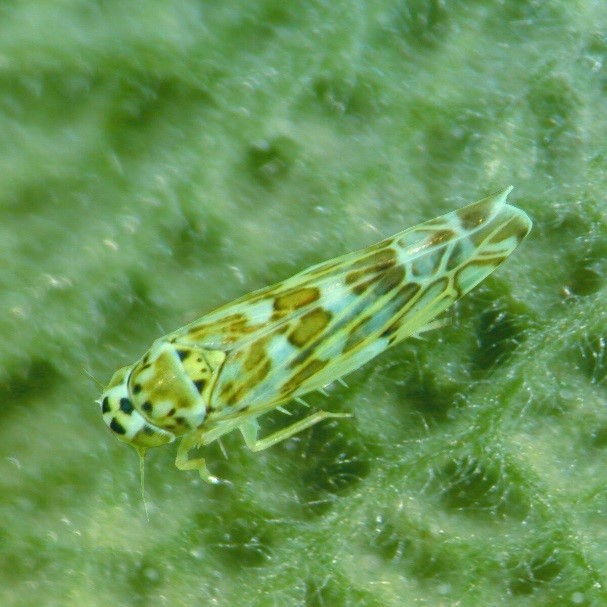Please click here to access the main AHDB website and other sectors.
‘Sage’ advice for controlling leafhopper on herbs
Wednesday, 17 March 2021
While Gazelle SG still appears to be the most effective method to control ‘sage’ leafhopper, some alternative bioprotectants show promise in our SCEPTREplus trial, explains Peter Seymour.
The chrysanthemum or ‘sage’ leafhopper (Eupteryx melissae) can present a serious problem to herb growers. They decrease the quality of herb crops by their feeding damage and can be a difficult target to reach with contact-acting plant protection products. Growers currently have few effective options for control.
Novel chemical and biopesticide products were tested for their efficacy in reducing numbers of introduced leafhoppers and damage to sage plants in cages. All of the products selected had a clear route to market and should be IPM-compatible. They were applied at the manufacturers’ recommended rates and timings over a three-week period, with assessments carried out over this time. All treatments mixed and sprayed well with no phytotoxic effects observed.
Encouragingly, positive results were found in the trial, with all treatments giving significant reductions in adult leafhopper numbers compared with the untreated control. However, the two novel conventional insecticides were slower-acting than most of the bioprotectants.
All of the treatments significantly reduced leaf damage on all assessment dates, but Gazelle SG, used as the industry standard, was the most effective on every date.
None of the treatments completely eliminated damage.
The leafhopper adults started feeding immediately after their release to the plots the day prior to spraying and high numbers were added (20 per plot of four plants). Thus, many of the plants in this trial would not have met the stringent retail standards for high-quality culinary herbs with almost zero tolerance of pests or damage. However, if treatments had been applied against lower numbers of leafhoppers, they might have maintained pest and damage levels below the commercial rejection threshold.
In a pilot experiment comparing yellow, blue and red sticky traps for adult leafhoppers in sage, significantly more were caught on yellow when leafhopper numbers were high but similar numbers were caught on all three trap colours when numbers were lower.




